Synopsis: Cropin has launched Cropin Sage, the world’s first generative AI (gen-AI)- powered agri-intelligence platform. This innovation, built on Google’s Gemini, offers comprehensive intelligence into the past, present, and future of cultivation. In this blog, we delve into the need and benefits of Gen-AI powered agri-intelligence platforms. We also explain how Cropin Sage, provides answers to natural language queries in an easy-to-understand, actionable visual format.
As climate change disrupts weather patterns and populations soar, food security needs simultaneously open up new opportunities amidst mounting economic pressures. Transparency and visibility across the global agricultural landscape are crucial, yet lack of data and fragmented information makes this difficult. Here’s where technologies like Artificial Intelligence (AI) can play a game-changing role. Its rapid evolution offers agriculture players a unique opportunity to tackle these challenges head-on.
Why Does Agriculture Need Gen-AI Powered Agri-intelligence Platform?
According to McKinsey, AI can generate $100 billion in on-farm improvements and $150 billion in enterprise benefits for food producers. So, why is agriculture particularly well suited for AI disruption, especially analytical AI and generative AI? Let’s explore:
- High Volumes of Structured and Unstructured Data: Weather patterns, soil conditions, historical yields, and more—agriculture generates a wealth of valuable data types, but these are unstructured data captured by different machines with different resolutions, time stamps, and a host of formats ranging from text to images.
- Millions of Farmers, Millions of Decisions: The sheer number of a diverse farming population is mind-boggling in itself. The data and decisions? Just don’t ask!
- A Host of Variables: From weather to water availability, countless factors influence crop yields. These complex datasets must be analyzed for a holistic view.
- Time is Money: Long R&D cycles and cumbersome logistics can hinder progress. Analytical AI can fast-track decision-making and improve efficiency.
Leveraging both analytical AI and generative AI across the entire agri-value chain can unlock significant economic value across the food system. Here is an example:
- Ask the Right Questions: With a Gen-AI querying platform, we can query historical and real-time weather, realistic pest scenarios, or even future yield estimations.
- Simulating the Future: Analytical AI models can simulate these scenarios utilizing millions of data points across relevant parameters to optimize farming practices, ultimately maximizing yield and minimizing risk.
This powerful combination translates to tangible benefits across the agricultural value chain:
- Informed Decision-making: Imagine querying critical crop data (lifecycles, climate, soil) and receiving clear insights in seconds – how would this transform decision-making for stakeholders?
- Global Visibility for Procurement: Could pinpointing ideal locations for crops anywhere in seconds, with real-time production data, help mitigate risks associated with fluctuating yields warranting last-minute adjustments?
- Optimized Crop Selection: By analyzing crop lifecycles and weather dependencies, what if identifying the best regions for cultivation (reducing trial periods) and predicting future yields (for governments to ensure food security) were as easy as asking a question?
- Predictive Insights – The Future is Now: What if you could predict underperforming crops, understand edge cases, and even identify potential problem regions – empowering proactive responses?
The Simple Complex Paradox
All the above require one solution – a seemingly simple concept – a powerful querying model!
This model must act as a bridge, translating your questions from natural language into SQL (Structured Query Language) queries. To fetch the answers, this must be mapped to a vast ocean of declared structured data, including real-time and historical information and even outputs derived from deep learning models (like crop yield forecasts).
This sounds simple, right?
But the twist lies in the word structure. Agricultural data isn’t always as neat and tidy as rows and columns in a spreadsheet. Agricultural data is a complex combination of structured and unstructured data. While SQL queries excel with structured data, the reality is that agricultural datasets captured by different machines vary in resolution, time stamps, and formats, ranging from text to images. This complexity poses unique challenges for analysis.
This simply means that the unstructured data from all over the world must be normalized or structured in grids (say, 1 km X 1 km or 5 km X 5 km, etc.). Next, the model must understand multiple data layers too, or the data must talk to each other to get the information in seconds!
To put this into perspective, agricultural land encompasses a staggering 4.8 billion hectares globally. And, each farmland is subject to a whirlwind of influences—weather, soil quality, water availability, and even socio-political factors. Creating a digital twin of all these factors is incredibly complex. This very complexity has slowed the digitization of agriculture compared to other sectors.
The Turning Point: Cropin Sage is Here!
This is where the ingenuity of the Cropin Cloud platform comes in. Over 14 years, Cropin has meticulously built a global crop knowledge graph, a powerful tool designed to tackle intricate agri-datasets. Cropin Sage, the world’s first-gen AI-powered agri-intelligence platform, is the culmination of this journey. This revolutionary tool, powered by Google Gemini, empowers agribusinesses and governments with a level of transparency and actionable insights never seen before.
Components of Cropin Sage
Cropin Sage, the planet’s first on-demand agri-food map offering agri-specific information and future predictions, is built with the following key tools-
Containerized Google Kubernetes Engine (GKE) Service: Cropin Sage, scalable as load increases, is deployed on docker containerized GKE service in the Google Cloud platform. It converts user queries in any natural language to SQL queries, fetches data from the database, and further processes to visualize data.
Google Gemini: The Smart Question Translator: Cropin Sage uses the Google Gemini model (Gemini Flash 1.5) with input text prompts and user text queries to generate SQL queries. It extracts user intent and executes SQL queries to get grid data.
Cloud SQL for Data Storage: All metadata about grids is stored in Google Cloud Platform’s Cloud SQL service and can be scaled as the volume of data increases.
Cropin Data Hub, the Data Processor: Raw data from various sources are organized into a grid system, making it easier to analyze. Different data layers for a specific region are processed and stored in the Cropin Datahub to generate a grid-level aggregated view. The data is ingested as multiple appropriate tables into Cloud SQL.
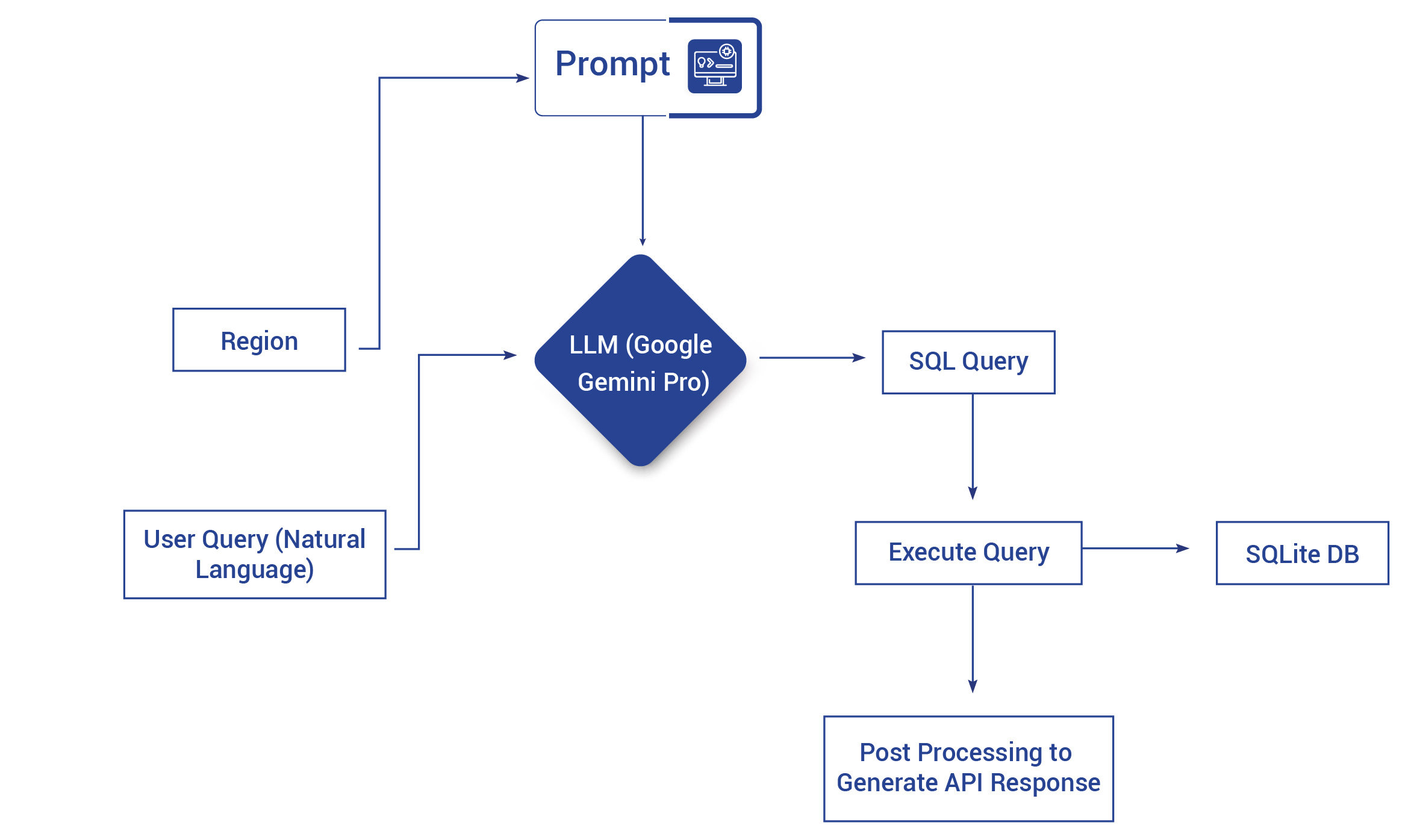
Figure 1: Current Simple Architecture of Cropin Sage
Model Training
Cropin Sage supports both GeoSpatial and Temporal (more than 30 years) data. The model evolves continuously to support new datasets, regions, and seasons of data, which are added continuously. Cropin Sage answers queries using this new data.
Here is how Cropin Sage keeps you informed in a region of interest.
- Historical spanning both short and long-range seasons over the past seven years.
- As the current season progresses, Cropin Sage continuously updates weather, climate, and various Cropin Intelligence layers, including end-of-season predictions.
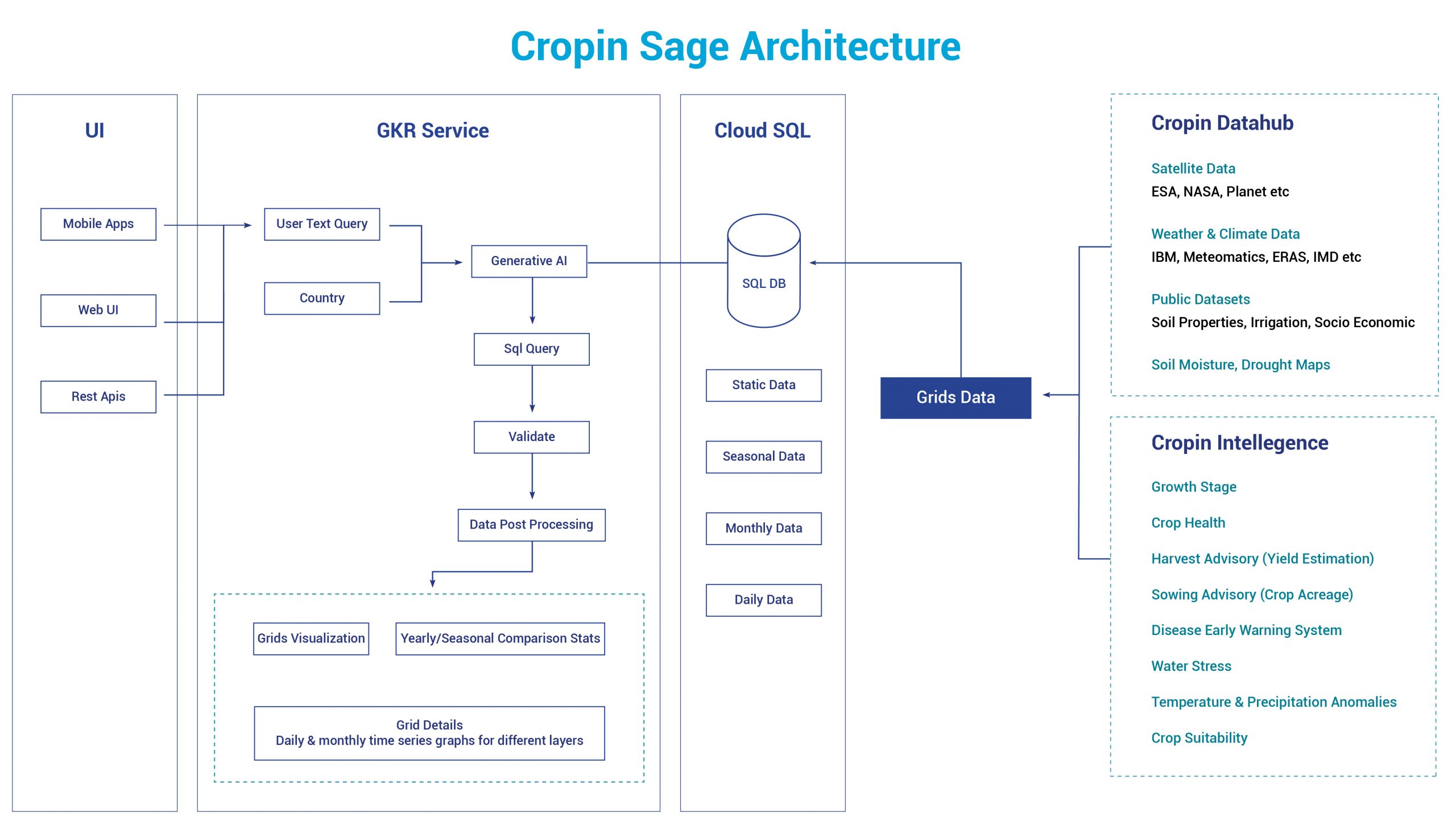
Figure 2: Cropin Sage Architecture
Types and formats of Datasets
Some of the agriculture intelligence datasets that Cropin Sage supports include:
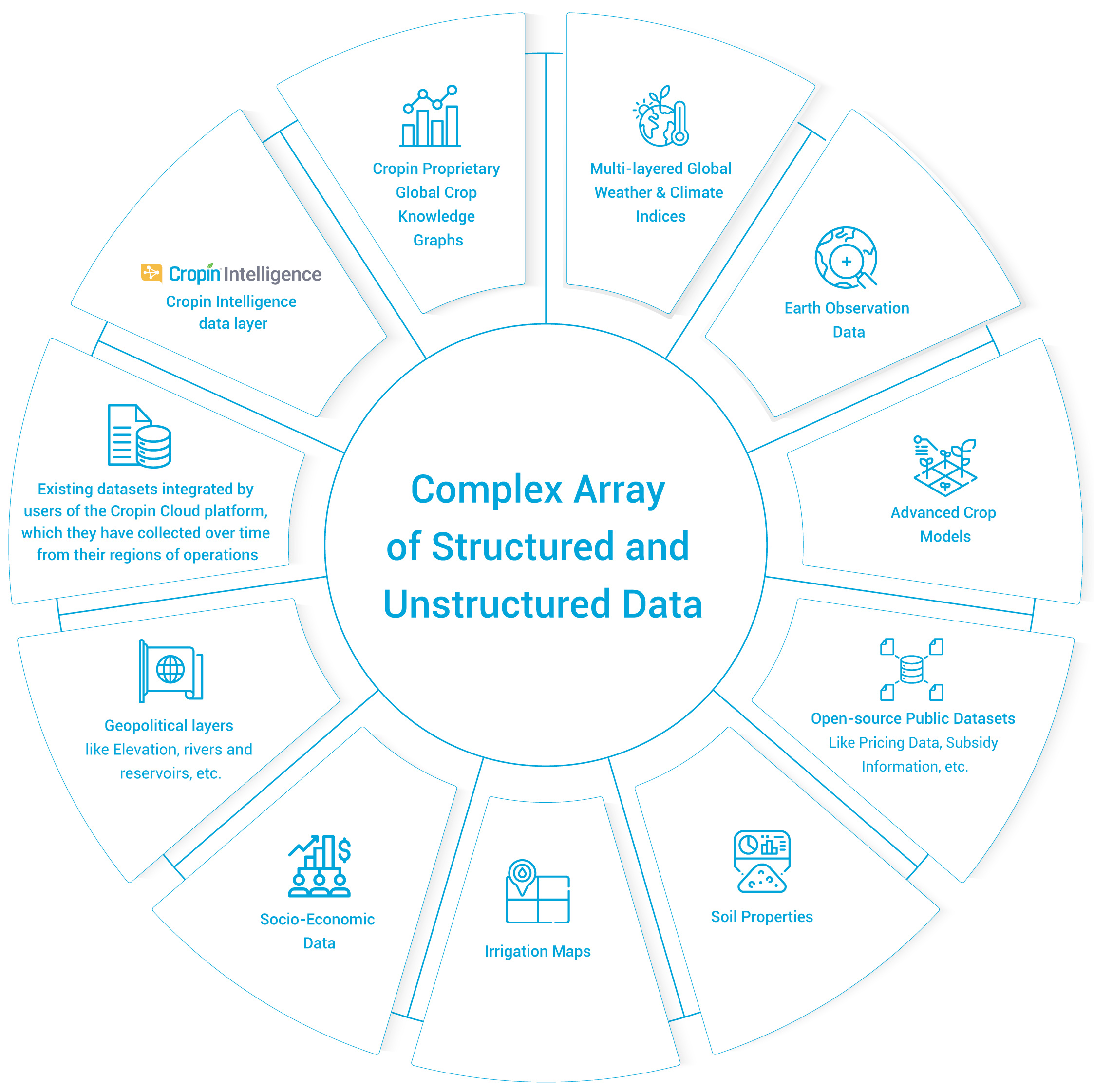
Each of the above datasets presents its unique challenges. The variety of file formats is vast, from geospatial maps to vector maps and stats tables. Captured by diverse sources, these datasets exhibit varying resolutions and frequencies. Here are some examples:
- Satellite images with different resolutions and frequencies
- Weather data at different frequencies and data types
- Sensors and tractors provide different formats of data
This complexity underscores the need to structure these data into grids for SQL to process and extract meaningful insights.
Cropin Sage extracts user intent from text queries and supports dynamic visualization of grid data on GeoSpatial maps. Bar charts, time series graphs, and infographics show stats and temporal comparisons for grid data filtered by query, thus converting complex information into actionable insights.

Figure 3: Example of a query & response from “Cropin Sage”
Users can hover over any grid to get complete information specific to the grid from different data layers, including both static and temporal data.
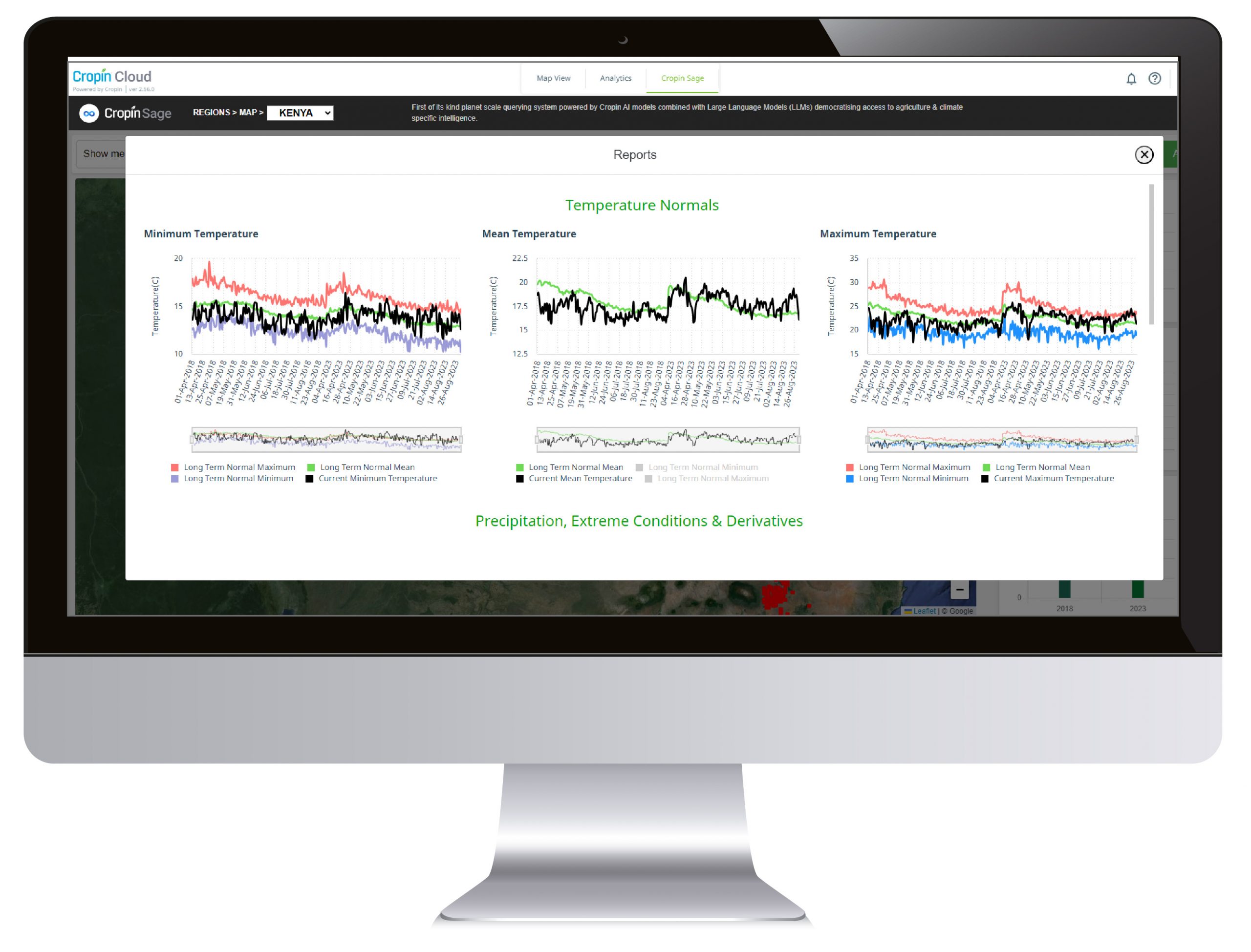
Figure 4: Weather and Climate indices details for a grid depicted in time series graphs along with LTN data.
Crops and regions covered by Cropin Sage:
At launch, Cropin Sage will provide intelligence on 13 key crops, including wheat, rice, potato, maize, and coffee representing nearly 80% of the world’s food demand. In this initial rollout, enterprise customers can deploy Sage across geographic locations and crops. As Cropin Sage is still expanding, in-depth intelligence may not be available for all regions yet. Cropin plans a phased global expansion aligned with customer needs and market demand. As Cropin Sage gains momentum, we expect Sage to cover more crops and countries.
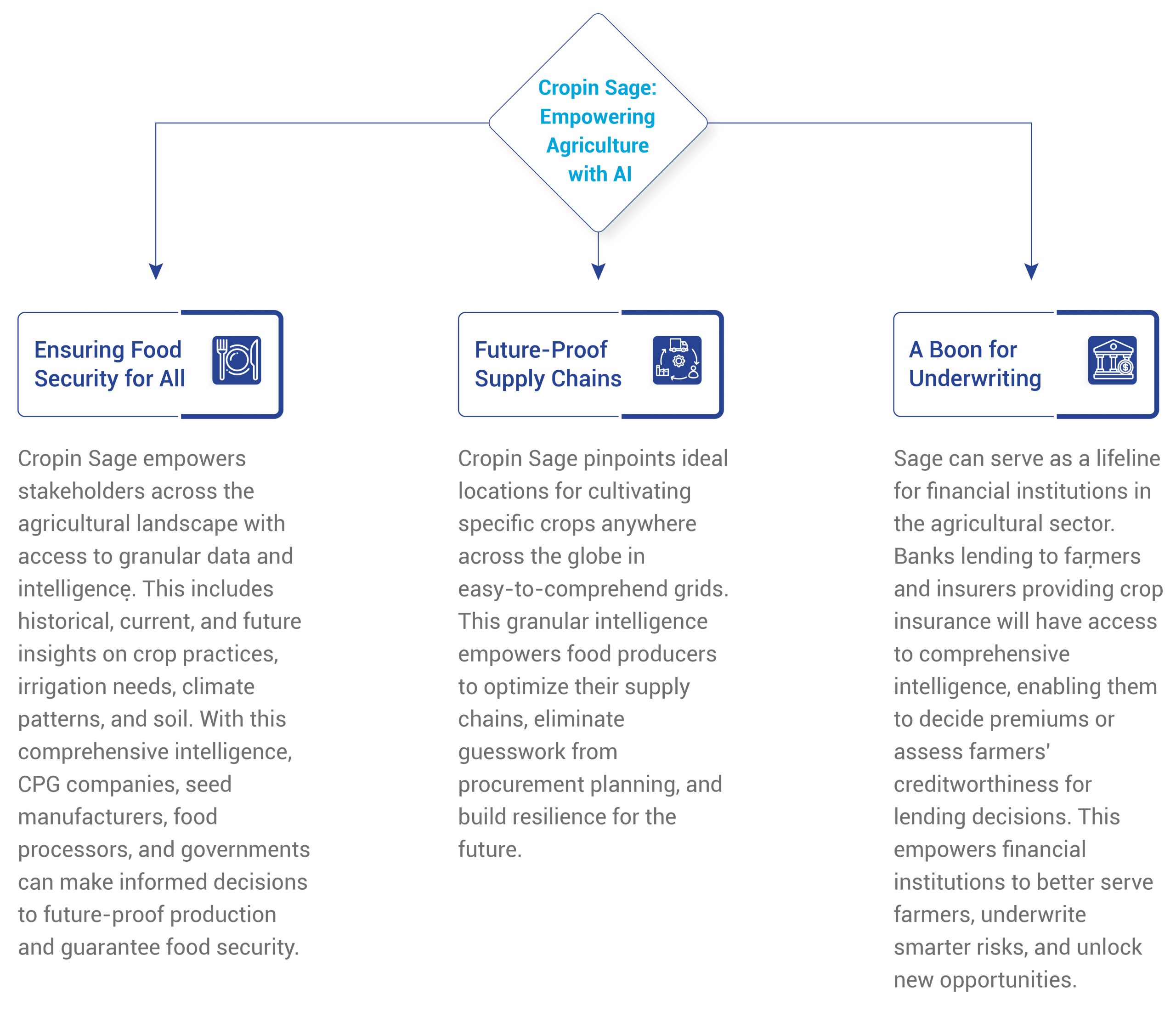
Cropin Sage leverages the power of AI to usher in a new era of intelligent and sustainable agriculture. Here’s how it paves the way for a more secure future.
- Ensuring Food Security for All: Cropin Sage empowers stakeholders across the agricultural landscape with access to granular data and intelligence. This includes historical, current, and future insights on crop practices, irrigation needs, climate patterns, and soil. With this comprehensive intelligence, CPG companies, seed manufacturers, food processors, and governments can make informed decisions to future-proof production and guarantee food security.
- Future-Proof Supply Chains: Cropin Sage pinpoints ideal locations for cultivating specific crops anywhere across the globe in easy-to-comprehend grids. This granular intelligence empowers food producers to optimize their supply chains, eliminate guesswork from procurement planning, and build resilience for the future.
- A Boon for Underwriting: Sage can serve as a lifeline for financial institutions in the agricultural sector. Banks lending to farmers and insurers providing crop insurance will have access to comprehensive intelligence, enabling them to decide premiums or assess farmers’ creditworthiness for lending decisions. This empowers financial institutions to better serve farmers, underwrite smarter risks, and unlock new opportunities.
Cropin Sage represents a quantum leap in agricultural intelligence. It delivers insights with unparalleled scale, accuracy, and speed by fusing cutting-edge AI, comprehensive data layers, and its proprietary global grid-based map and crop knowledge graphs. Beyond historical data, Sage utilizes AI to predict future yields, empowering informed decision-making across the agricultural landscape. This goes a long way in averting shortages of staples. By asking the right questions, agri-industry, and governments can unlock regional intelligence patterns for specific crop value chains in a climate-impacted world. This synergy unlocks the potential for smarter crop production planning, leading to a more secure and sustainable future for food.
Ready to unlock the future of agriculture?
Explore Cropin Sage and witness the power of real-time agri-intelligence.
